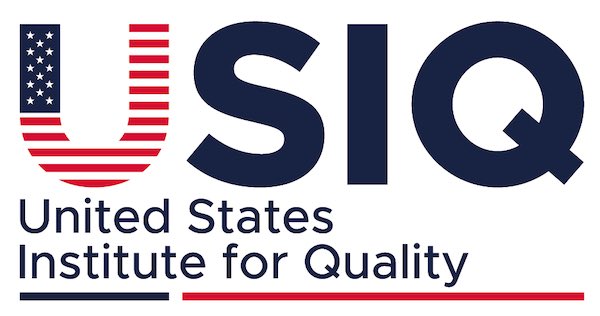How Can I Reduce Recruiting Costs?
Finding the right talent is crucial for any business, but the recruitment process can be a major cost factor. It can quickly drain your budget and resources, hindering your ability to grow. This blog post is your guide to reducing recruiting costs and attracting top talent without breaking the bank. We will explore actionable tips to streamline your hiring efforts, maximize your ROI, and, ultimately, build a successful team.
What are Recruitment Costs?
Recruitment cost is the total investment required to bring a new employee on board. This includes:
- Direct expenses: Advertising fees and job board announcements, agency fees, background checks, and assessments.
- Indirect costs: Benefits and salaries of your team for recruitment, time spent interviewing and screening, and administration costs.
- Hidden costs: Lost productivity due to vacant positions, time spent training for new hires, as well as potential loss of work due to poor hiring.
While the average cost to recruit an employee is $4,700, it can vary based on your industry, position level, and chosen hiring methods. Additionally, the time to hire typically falls between three to six weeks, impacting productivity and potentially affecting revenue.
Calculating your true recruitment cost provides a comprehensive picture of the financial impact of hiring. This valuable insight helps you to make informed decisions and allows you to optimize your recruitment strategy.
How to Reduce Recruitment Cost

1. Retain Top Talent
Retaining your existing workforce is often the most cost-effective way to cut recruitment costs. The average cost of training a new employee is around $1,250. As you can imagine, this can differ per industry, profession, etc. However, you can remove these costs completely if you just invest in your current team. Yes, it may also cost money, but it will be way cheaper and more effective.
Here are some ways that you can improve talent retention:
- Develop a positive and uplifting workplace: Establish an environment that promotes employee well-being and provides opportunities for professional growth.
- Offer competitive benefits and compensation: Regularly review salary and ensure that compensation packages are competitive.
- Make sure you invest in career development: Give employees the opportunity to develop new skills, work on difficult projects, and grow their careers.
By using these strategies, you can create a workplace environment that fosters loyalty and retention. Doing this can reduce reliance on expensive recruitment efforts, lowering your overall cost of recruitment.
2. Focus on Quality Candidates
Attracting qualified talent is crucial, but focusing solely on quantity is not the most cost-effective strategy. Here is why prioritizing quality over quantity matters:
- Lower costs: Instead of having to sort through numerous programs, it is possible to lower costs by focusing your efforts on only a small number of highly qualified people.
- Faster hiring: Focusing on high-quality candidates speeds up the hiring process. This leads to faster decisions and a faster time-to-hire.
- Better Candidate Experience: A specific approach will ensure that you draw in candidates who are truly interested in the job as well as your business.
Remember, while an average of 118 people apply for a single job, it takes 21 to 80 applications to find one actual candidate. This highlights the inefficiency of attracting a large pool of unqualified candidates.
3. Optimize Job Board Spending
You may feel pressured to pump more resources into job boards when facing urgent hiring needs. Unfortunately, this strategy often yields little to no returns. A Shortlist report highlights this trend, showing that despite some job boards increasing their fees by over 300%, job ad performance has actually declined since 2020.
To combat this, consider using HR software with integrated job board capabilities. These tools can provide significant cost savings compared to individual job board subscriptions. This software helps you quickly identify the most effective job boards for your specific needs, optimizing your spending.
4. Leverage Social Media Recruitment
Social media offers a cost-effective and time-efficient way to attract qualified candidates. Data supports this. According to Betterteam, 70% of recruiting managers successfully hired talent using social media in 2023.
There are a tonne of platforms you can use. Each has its own unique advantage. These include:
- LinkedIn (49 million job seekers use LinkedIn)
Remember: The best platforms for your recruiting efforts will depend on your target audience and the types of roles you have open.
5. Build A Strong Employer Brand
A strong employer brand attracts candidates organically. When you have a positive reputation as a great workplace, talented individuals will be more inclined to seek you out. This reduces your reliance on costly job boards, recruitment agencies, and extensive advertising campaigns.
A clear and compelling employer brand helps you attract pre-qualified, culturally-aligned candidates. People who resonate with your company’s mission and values are likelier to succeed and be happy in their roles. This leads to decreased costly turnover and the need to restart the recruitment process frequently.
With a strong employer brand, your existing employees become ambassadors. They will promote your company within their networks, organically expanding your reach into qualified talent pools. This boosts referral programs and reduces the cost to recruit an employee.
6. Automate Recruitment Tasks
Automate everything you can within your hiring process. Recruitment software makes this possible, offering a powerful way to streamline tasks, save money, and boost efficiency for your team. It can handle candidate sourcing, CV screening, interview scheduling, and overall candidate management.
Here is how recruitment software helps with automation:
- Automated Job Posting: It is easy to distribute job postings across various platforms with just only a couple of clicks.
- CV Screening: Filter resumes quickly using your search terms and the criteria you want to meet.
- Candidate Management: Keep track of your candidate’s information with easy-to-access candidate records and a history of communications.
- Interview Scheduling: Coordinate interview times with applicants as well as hiring staff members.
Modern ATS (Applicant Tracking System) software can take this automation even further, enabling full hiring process automation and secure digital workflows.
7. Incentivize Employee Referrals
Employee referral programs are a highly reliable and cost-effective recruitment strategy. A recent Monster survey found that 65% of job seekers would consider a position if they learned of it through a personal connection. To tap into this potential, encourage your employees to refer qualified candidates. Offer incentives like gift cards or bonuses for successful referrals.
8. Build a Talent Pipeline
A proactive talent pipeline strategy shifts your focus from immediate hiring needs to long-term talent acquisition. When a candidate demonstrates strong cultural alignment, even without a perfect match to current openings, nurture that relationship for future potential. This approach can lead to valuable hires with reduced recruitment costs when suitable roles become available.
Step-by-Step Guide to Building a Talent Pipeline:
- Determine Ideal Profiles of Candidates: Work with hiring managers to identify the abilities, experience, and cultural appropriateness for your most common or crucial tasks.
- Expand Your Sourcing: Use a variety of channels (job boards, social media, job fairs, or referrals) to reach out to a wide variety of talented candidates.
- Engage passively: Candidates who are not good candidates at the current time (but maybe are in the future) should be provided with a personalized message outlining their interest in future opportunities.
- Make the investment in a Talent Management System: A solid talent management system, typically integrated into an ATS, allows you to organize, categorize, and manage potential candidates.
- Maintain regular contact: Keep in contact with the members of the pool who have potential via company news, newsletters, and personal communication.
Remember, a talent pipeline is an ongoing investment. You will create a competitive advantage in the talent marketplace by consistently nurturing relationships with qualified candidates.
9. Track Key Recruitment Metrics
Recruitment analytics offer you a powerful tool to understand the efficiency and cost-effectiveness of your hiring process. By tracking key metrics, you can identify areas for improvement, optimize your process, and reduce overall costs.
Here are critical cost and time-effectiveness KPIs to measure:
Cost-Related KPIs:
- Cost-per-Hire: (Total recruiting expenses / Number of hires). Includes advertising costs, agency fees, internal HR time, etc.
- Cost-per-Applicant: (Total recruiting expenses / Number of applicants). Helps evaluate the cost of attracting candidates through different channels.
- Source of Hire: Track where successful hires originate (job boards, referrals, social media) to identify the most cost-effective channels.
Time-Related KPIs:
- Time-to-Fill: Days from job opening to offer acceptance. Pinpoints bottlenecks in the hiring process.
- Time-to-Source: Days from posting a job to finding a qualified candidate. Measures the efficiency of your sourcing methods.
- Offer Acceptance Rate: (Number of accepted offers / Number of offers made). Indicates the attractiveness of your offers and employer brand.
Tracking these KPIs allows you to review and optimize your processes. Over time, you can change your strategy based on data and make your recruiting process more cost and time-effective.
Summary
As you know, finding top talent is essential for business success. However, it can be expensive. Above, we have given you some tips to reduce recruiting costs. We covered tracking and optimizing KPIs and automation down to retaining strategies. By implementing these, you can reduce hiring costs and make cost-effective decisions that positively impact your bottom line.
Elevate your recruitment strategy and reduce costs with a strong employer brand. USIQ’s data-driven certifications, like Top Employer, Family-Friendly Employer oder World´s Best Employer, showcase your commitment to a positive work environment. This attracts top talent organically, boosts employee retention, and cuts down on expensive hiring cycles. Learn how USIQ certification transforms your employer brand today.

